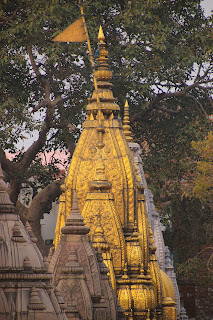Mumbai, a thriving metropolis on India's western coast, is well known for its legendary local rail system. The Mumbai local trains have been a crucial component of the city's character for over a century and are sometimes called the city’s lifeline. Millions of people in Mumbai depend on this enormous railway network for easy mobility between the city's many areas. The Mumbai local rail system's intriguing characteristics, intriguing history, and continuing relevance will all be discussed in this blog.
Historically Speaking
The
first railway line between Bombay (now Mumbai) and Thane was built in 1853, marking
the beginning of the history of the Mumbai local train. The Indian railway
system began with this and eventually developed to link additional areas.
Mumbai's regional rail network became crucial for easing everyday
transportation within the city as the city expanded dramatically. As electric
trains increasingly replaced the original steam-powered locomotives, efficiency
increased, and pollution decreased.
Numerous Divisions and a Broad
Network
Western
Railway (WR), Central Railway (CR), and Harbor Line are the three main
divisions that make up the local rail system in Mumbai. Each division covers
suburban regions in addition to certain city districts. While the Central Line
serves the eastern suburbs, the Western Line links the western suburbs to the
city center. The Harbor Line, which follows the east waterfront, ensures access
to critical areas, including South Mumbai's corporate center.
Local Train Types
Mumbai
has three different types of local trains: Slow, Fast, and the more
contemporary AC local trains. Fast trains bypass certain stops, saving travel
time for more extended travels, whereas slow trains stop at every station,
making them excellent for short-distance travel. The air-conditioned local
trains provide passengers with a convenient choice. These trains have
transformed The journey in Mumbai, particularly during the sweltering summers.
Rush Hours Like Never Before
Local
trains in Mumbai are known for their cramped carriages and famous rush hours.
Millions of commuters ride these trains at peak hours, a unique experience.
Mumbaikars maneuver the platforms and cram onto the crowded trains with the
efficiency of a well-choreographed dance while preserving a remarkable sense of
order. During these everyday surges, the people's energy and tenacity are
inspirational.
Commuter culture and the social
fabric
The
local train ride is more than just a means of getting about; it represents
Mumbai's rich socioeconomic diversity. Regardless of caste, religion, or social
status, people from all walks of life converge in the cramped space of railway
carriages. Here, relationships blossom, talks start, and cross-cultural
interchange flourishes. Numerous love, friendship, and success tales have been
shared on the local train.
Efforts to Modernize and Challenges
The
Mumbai local train system is still well-known, although it confronts several
difficulties. Significant challenges include overcrowding, maintenance
concerns, and sporadic outages brought on by monsoons and other causes.
However, the government has started implementing modernization plans, adding
air-conditioned trains, bettering the infrastructure, and stepping up safety
precautions. These initiatives aim to improve the commute for the millions of people
who depend on the regional train system.
Mumbai's
local rail system is essential to the city's economy, as stated in 300 words.
It makes it easier for workers to move between employment hubs, ancillary
sectors, and corporations. The ease of access to suburban regions encourages
the construction of satellite townships and the real estate industry. Street
sellers and small enterprises close to train terminals further boost the local
economy.
The
city of Mumbai's adaptability and tenacious spirit are demonstrated through the
local train system. It has seen Mumbai's development and alteration throughout
the years and has remained an essential component of the city's character. In
addition to serving as a means of transportation, local trains represent the
resilience and cohesion of Mumbai residents. The local train network will
endure as the city develops, linking millions of ambitions and aspirations and
acting as a lifeline for the next generations.
---END---










0 Comments